Announcements
Wavelength calibration of GRACES is obtained using GCAL, the facility calibration unit. Flat-fielding is done with GCAL. Baseline calibrations will be obtained for all observations, both queue and classical. Note that GRACES calibrations are obtained during the day. There is no gain and it takes too much time to obtain them during nighttime.
Baseline Calibrations
Baseline calibrations include:
- Biases
- GCAL flat field
- GCAL ThAr arc
- Flux standard star
The day before GRACES is schedule for the night, a series of flats, arcs and biases are taken for each read mode and spectroscopic mode. Those baseline calibrations are shared by all programs observed in that same night. Spectrophotometric standards are observed each semester in both spectroscopic mode during poor weather nights. They can be used for flux calibration for all the science spectra observed during the semester.
Applicants should not include time for baseline calibrations in their Phase I proposals. If additional calibrations are deemed necessary by applicants, for example to achieve a precision beyond that achievable via the baseline set, then these must be included explicitly as part of the Phase I proposal and Phase II science program. Any time required for additional calibrations between the hours of nautical sunset and sunrise to obtain baseline calibrations will be charged to that particular program.
| Measurement Type | Notes |
| Bias | A series of biases in all read modes are obtained daily. |
| GCAL flat field | Flat fied calibration frames are obtained as part of daytime baseline calibration using light sent through the fibers from GCAL to ESPaDOnS. A total of 20 frames are observed per day, per spectroscopic mode, per read mode, to ensure the extrction is not limited by the flat field signal-to-noise ratio. |
| Wavelength calibration |
ThAr exposures for each spectroscipic mode are obtained as part of daytime baseline calibration. |
| Flux standard stars |
Selected from the sources listed on the GMOS spectrophotometric standard star page. One spectrum per spectroscopic mode is observed each time GRACES is installed. Observations are not guaranteed to be obtained during the same nights as the science observations for the program. Observations to provide absolute spectrophotometric calibration are not included as part of the baseline calibration set. |
| Telluric standard star | The flux standard stars may be use for approximate removal of telluric lines but the observations of the flux standard are not guaranteed to be obtained during the same nights as the science observations for the program. |
| Radial velocity standard star | Radial velocity standards are not observed routinely as part of baseline calibrations. Any program that requires radial velocity standards should include these observations in the phase II for the program. |
| Darks | The ESPaSOnS dark current is 0.0126 é/pix/h. Dark images are not taken. |
| Bad pixel mask | A bad pixel mask is produced by the extraction pipeline OPERA. |
Flat/Arc Configuration and Exposure Times
Flat field images and ThAr spectra do not have to be planned during phaseII, as they will be observed in the day time as baseline calibrations. These calibrations will be passed along with the data observed during the night in the corresponding spectral mode.
If you want to have ThAr spectra taken at night with your science, please add this to your science sequence. Please see the GRACES OT library for examples of how to do this. The basic setup adds 3 arc exposures but you may also choose to take a single arc exposure. Exposure times are 50s for 2-fiber mode and 100s for 1-fiber mode.
Examples of Calibration Data
- ThAr spectra for wavelength calibration
- Flat fields for GRACES + GCAL
- Bias images from ESPaDOnS' detector
ThAr spectra
3 ThAr arcs are taken each afternoon and each morning. These are only taken in a single fiber mode. In the afternoon, arcs are taken in the fiber mode used for science in the first half of the night while morning calibrations are taken in the fiber mode used by the science in the second half of the night.
Example Arc spectra:
Here are examples of ThAr arc frames corresponding to the two spectroscopic modes:
| 2 fiber mode (target + sky) : R~40k | 1 fiber mode (target only) : R~67.5k |
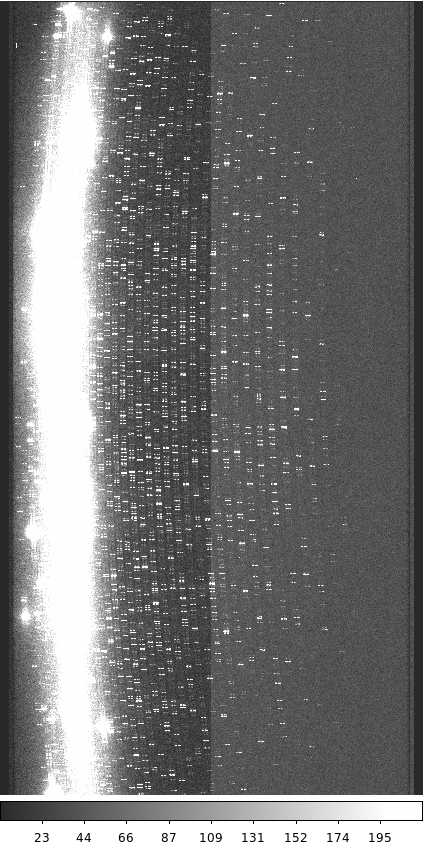 |
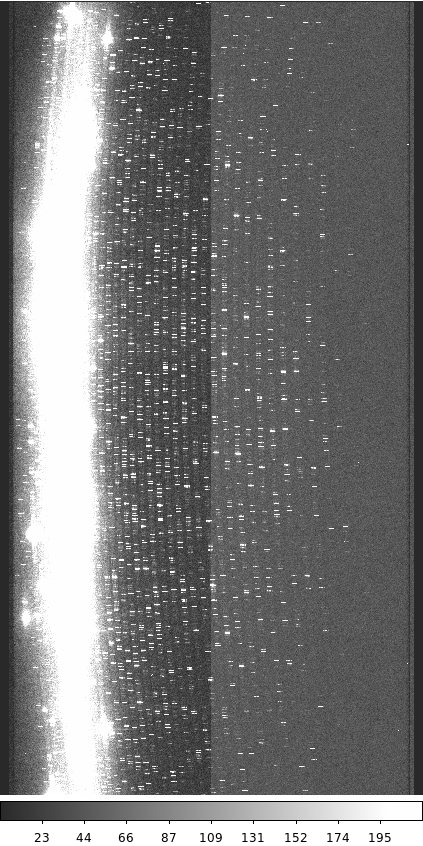 |
| <-- red blue --> | <-- red blue --> |
For a clearer view of the sliced image at different orders, here is a close-up view for both modes:
| 2 fiber mode, slices each fiber image in 2 | 1 fiber mode, slices the fiber image in 4 |
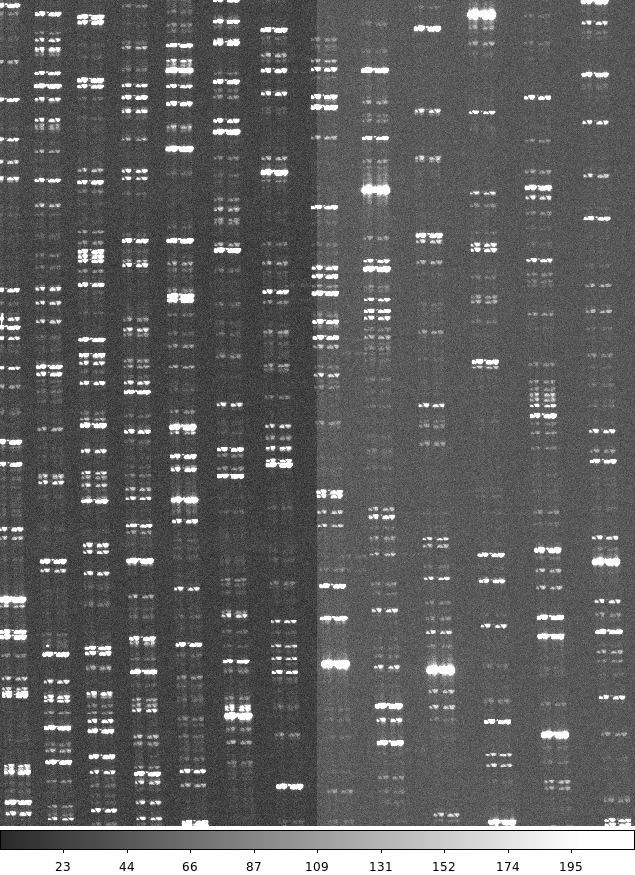 |
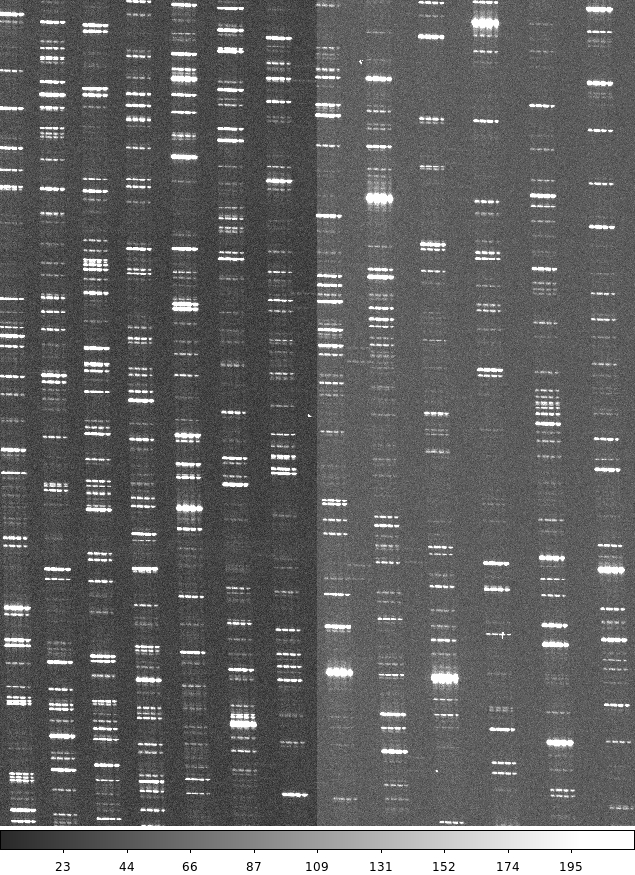 |
| <-- red blue --> | <-- red blue --> |
Flat field images
Five flats are taken in each of Normal and Slow readmodes each afternoon and each evening. Flats are ONLY taken in a single fiber mode in the afternoon for the fiber setting to be used in the first half of the night. Morning calibrations are taken in the fiber mode used in the second half of the night.
Here are examples of flat field frames corresponding to the two spectroscopic modes:
| 2 fiber mode (target + sky) : R~40k | 1 fiber mode (target only) : R~67.5k |
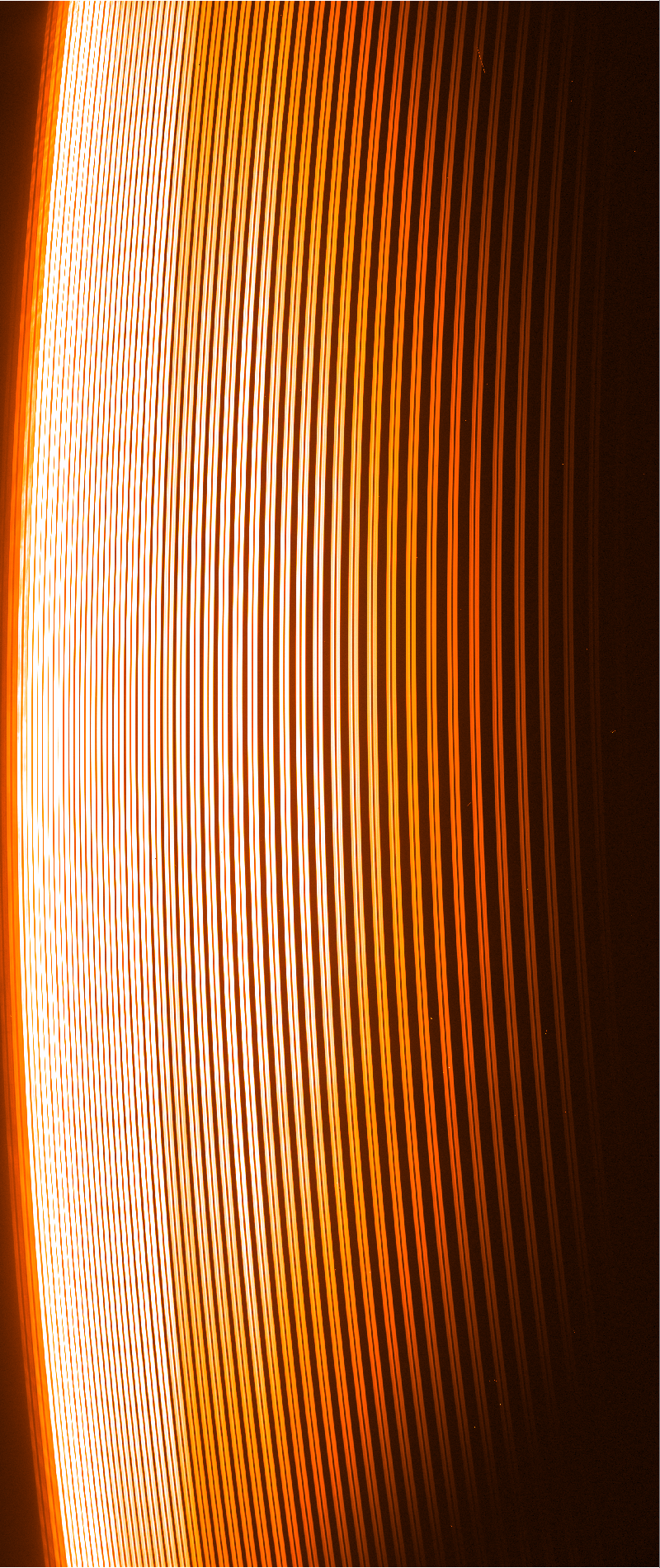 |
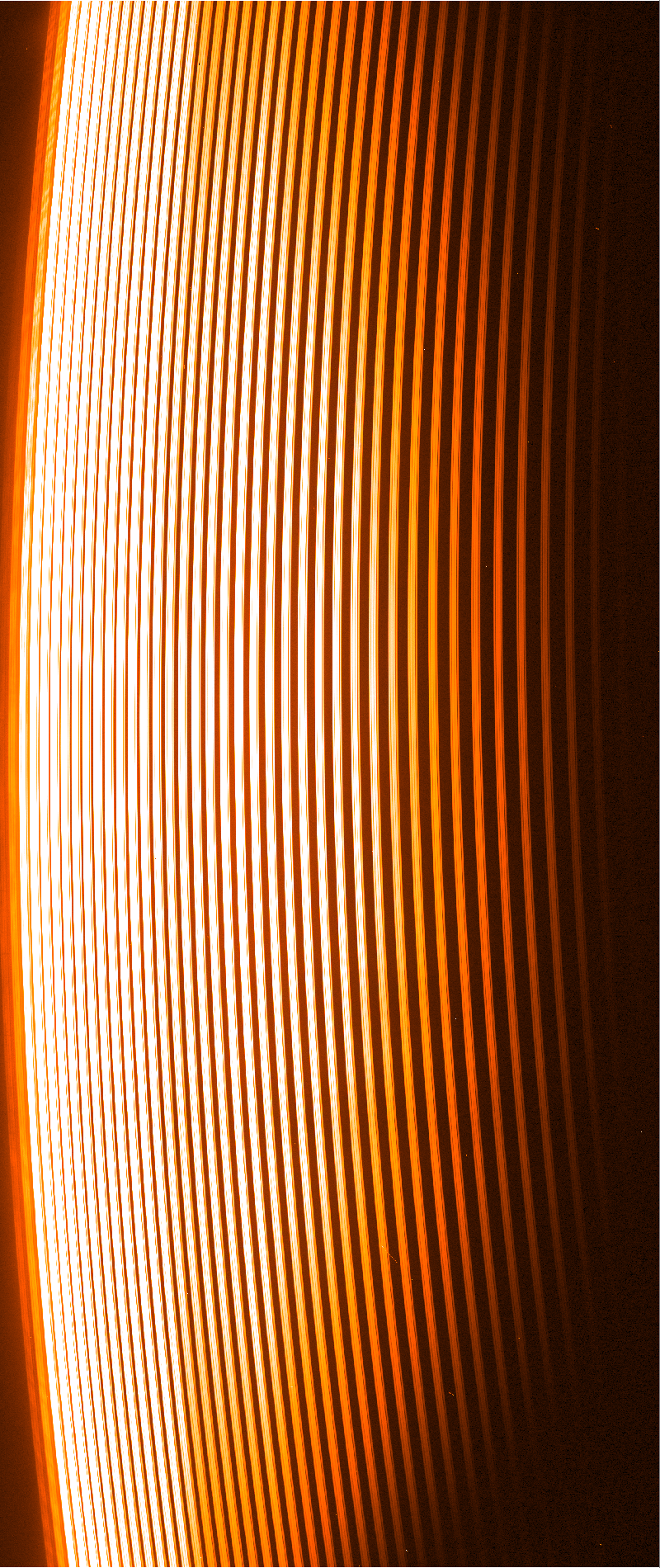 |
| <-- red blue --> | <-- red blue --> |
Note that those frames were observed during GRACES phaseI and in 1 Amp mode. Espadons (and therefore GRACES) is currently operated in 2 Amp mode.
For a clearer view of the sliced image at different orders, here is a close-up view for both modes:
| 2 fiber mode, slices the fiber image in 2 | 1 fiber mode, slices the fiber image in 4 |
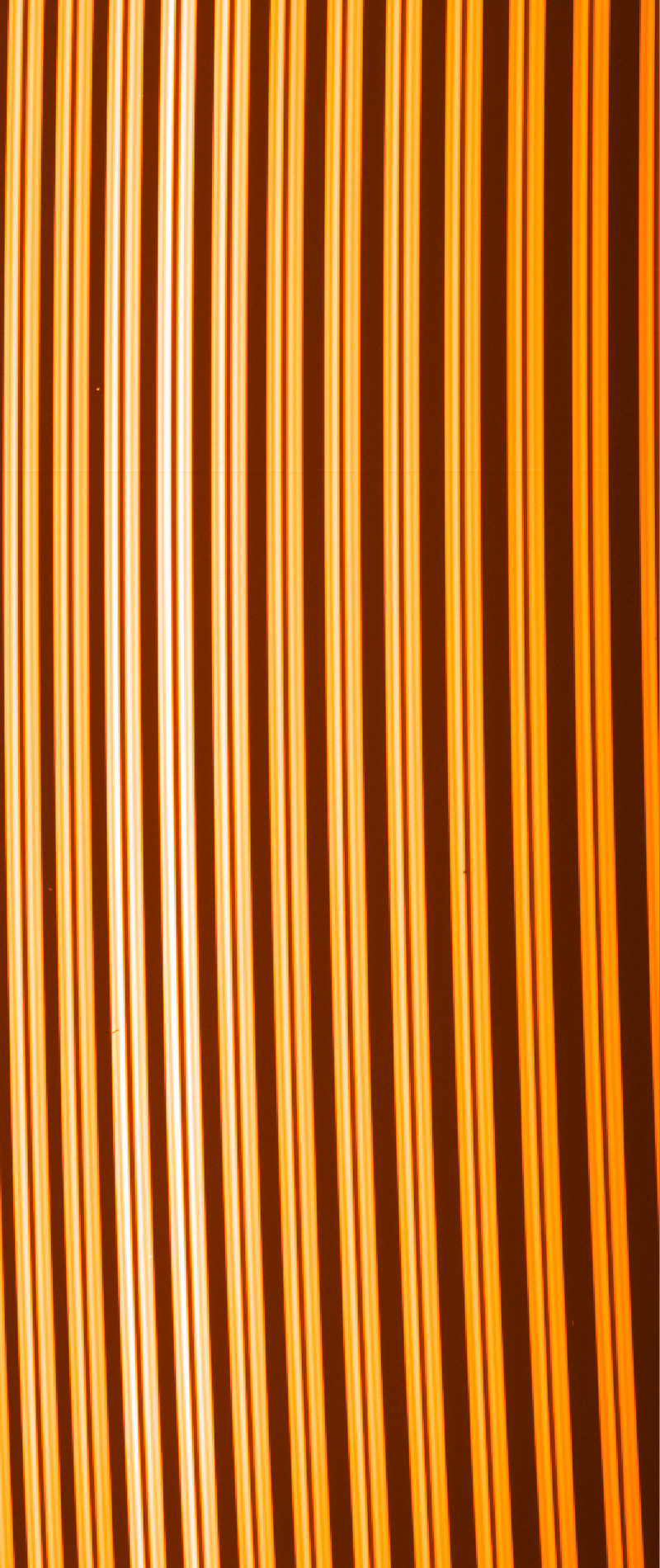 |
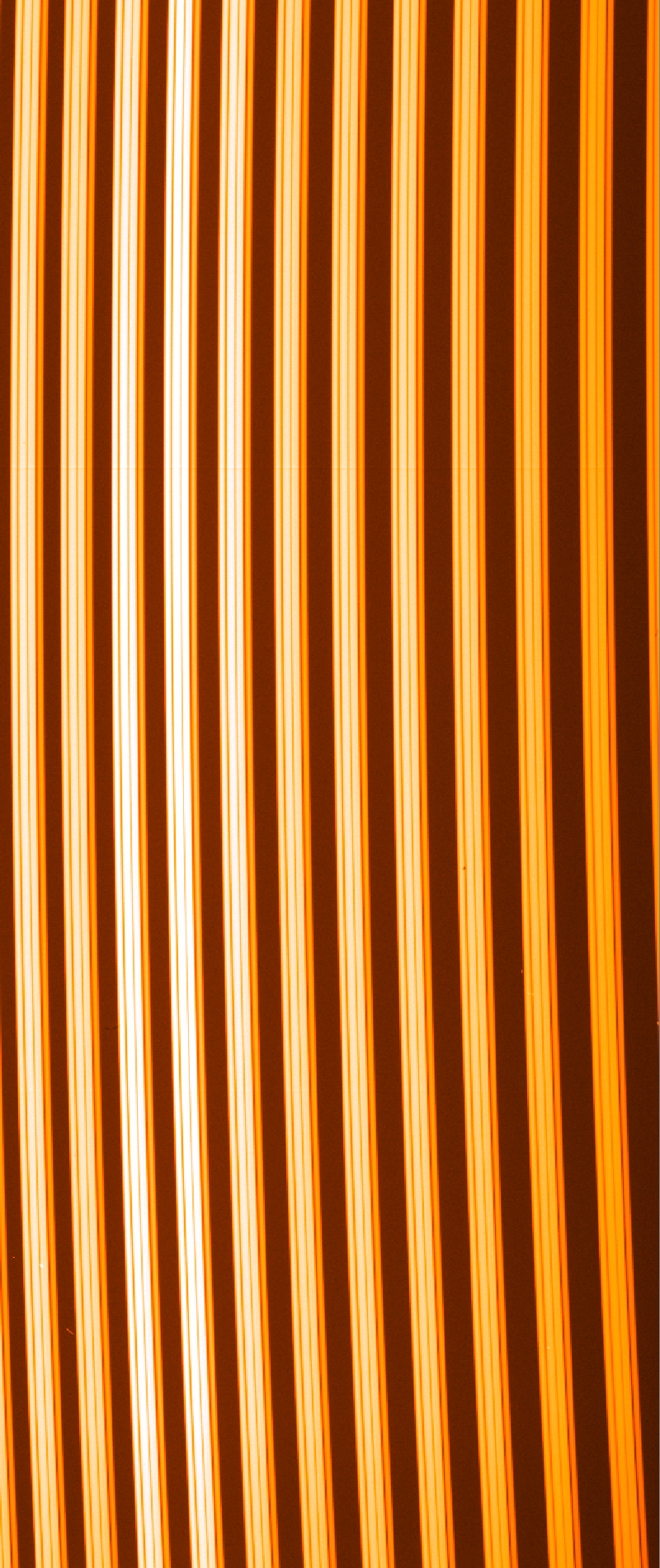 |
| <-- red blue --> | <-- red blue --> |
Bias Images
Ten biases are taken in each of Normal and Slow readmodes every afternoon and every morning.
Here is an example of a bias image in 2 Amp mode.
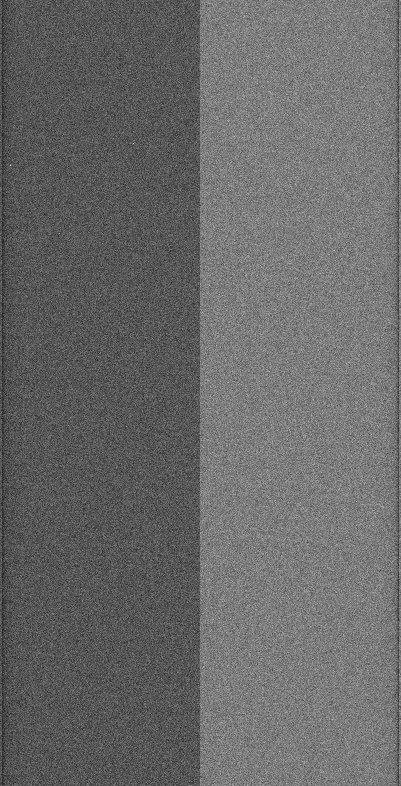
For more information on the data format and reduction, please see the Data Format and Reduction page